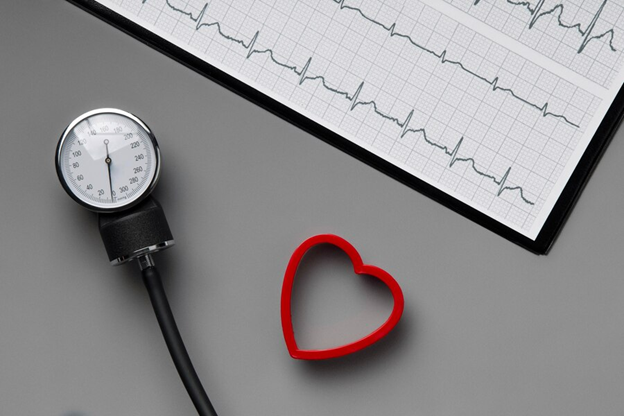The health of your heart is crucial for your overall well-being. Understanding tests like the cardiac profile test is essential for maintaining good heart health. This test might sound complicated, but it’s key to keeping your heart in check. Here, we’ll break down everything you need to know about this test in a simple, reassuring way. If you’re looking to get a better grasp on your heart’s condition and ensure you’re on the right track, you’ve come to the right place!
Unpacking the Cardiac Profile Test
A cardiac profile test, also known as a heart profile test or heart panel blood test, is a series of blood tests. These tests help assess the risk of heart diseases. They check for specific markers in your blood, giving you, and your doctor, a clear picture of your heart health.
Common components of this test include checking cholesterol levels and other substances linked to heart problems. Contrary to common belief, these tests are simple and easy to undergo. They simply require a small blood sample and are non-intrusive, so there’s no need to worry.
Components of a Cardiac Profile Test
- Lipid Profile: This part measures different types of cholesterol:
- Total cholesterol: Too much can be risky.
- LDL (Low-Density Lipoprotein): Often called “bad cholesterol” and can clog arteries.
- HDL (High-Density Lipoprotein): Known as “good cholesterol,” it helps remove bad cholesterol.
- Triglycerides: High levels can increase heart disease risk.
- Cardiac Biomarkers: These are substances that get released into the blood when the heart is damaged:
- Troponin: High levels could signal a heart attack.
- CK-MB: Helps check for damage to heart muscle.
- BNP or NT-proBNP: High amounts can mean heart failure.
- Additional Tests:
- C-reactive protein: Shows inflammation and might indicate heart risk.
- Homocysteine: High levels could mean higher heart disease risk.
- Lipoprotein(a): This is another type of cholesterol that can affect heart health.
The Significance of Cardiac Profile Tests
Cardiac profile tests play a big role in spotting heart disease risks early. By identifying these risks, you can take action before serious problems develop. They’re not just about detecting potential issues; they’re incredibly helpful for those who already have heart conditions as they monitor ongoing heart health.
Moreover, these tests are crucial for guiding your treatment plan. By knowing what’s happening inside your heart, your doctor can tailor treatments specifically for you, ensuring better management of your heart health.
When and Why, You Should Get Tested
Age can play a role in when you should consider testing. It’s typically recommended for those over 40 or younger folks with risk factors. Consider a cardiovascular profile test if you have a family history of heart disease, high blood pressure, or unhealthy lifestyle habits like smoking or a poor diet. If you experience symptoms such as chest pain, shortness of breath, or unusual heart rhythms, it’s wise to get a heart panel blood test right away.
What to Expect During the Test: A Step-by-Step Guide
Before getting a heart profile test, it’s often advised to fast for 9-12 hours. This ensures accurate results. During the test, a healthcare provider will draw blood, which is quick and usually painless. Results are typically ready in a few days, but your doctor will guide you on when to expect them. Knowing these steps can help ease any worries you might have.
Interpreting Your Test Results: What They Mean
Understanding your test results is key. Each metric provides insights into your heart health: – High total cholesterol might mean an increased risk of heart disease. – Elevated LDL is often a concern, while higher HDL is more favorable. – High triglyceride levels can signal potential trouble for your heart.
Always discuss your results with your doctor. They can explain what each value means for your specific situation and guide you accordingly.
Limitations and Complementary Nature of Cardiac Profile Tests
While these tests are useful, they’re not diagnostic on their own. A high or low result doesn’t automatically mean there’s a serious problem. Sometimes, results can be false positives or negatives. Therefore, these tests are best used as part of an overall health evaluation, alongside other assessments and your doctor’s insight.
Steps to Take Post-Test: Enhancing Heart Health
Once you have your results, taking care of your heart is next. Here are some steps you can follow: – Lifestyle Changes: Eat a balanced diet, exercise regularly, and avoid smoking. – Medications: Sometimes, doctors might prescribe medication to manage your cholesterol levels or blood pressure. – Follow-Up Testing: Regular check-ups ensure that any issues are caught early and managed properly.
Conclusion: Proactive Heart Health Begins with Awareness
In summary, a cardiac profile test is a vital tool for keeping tabs on heart health. By understanding and using these tests, you can take charge of your heart’s wellbeing. Regular check-ups and attentiveness to heart health are essential. Be proactive, stay informed, and continue taking steps to a healthier heart. Your future self will thank you for it!

